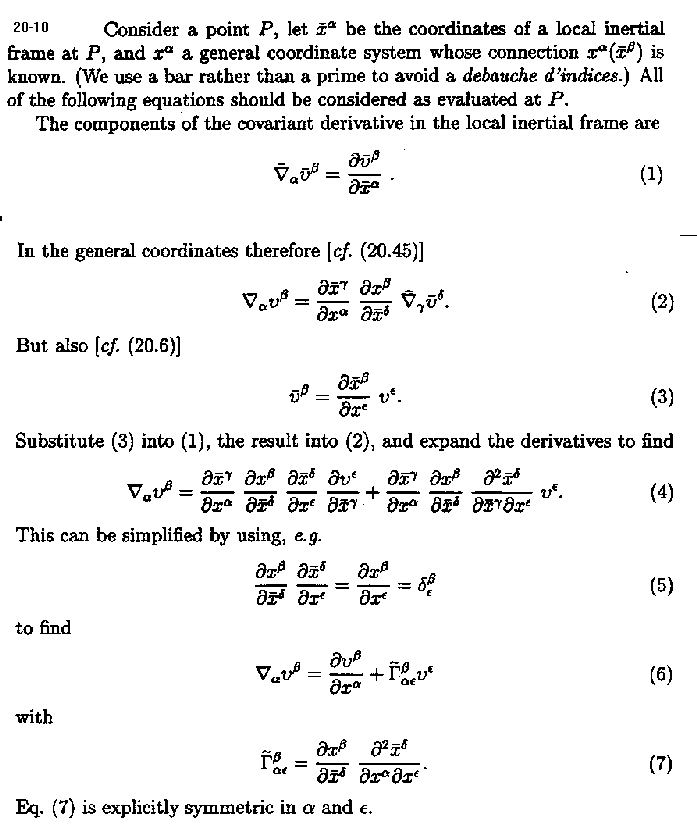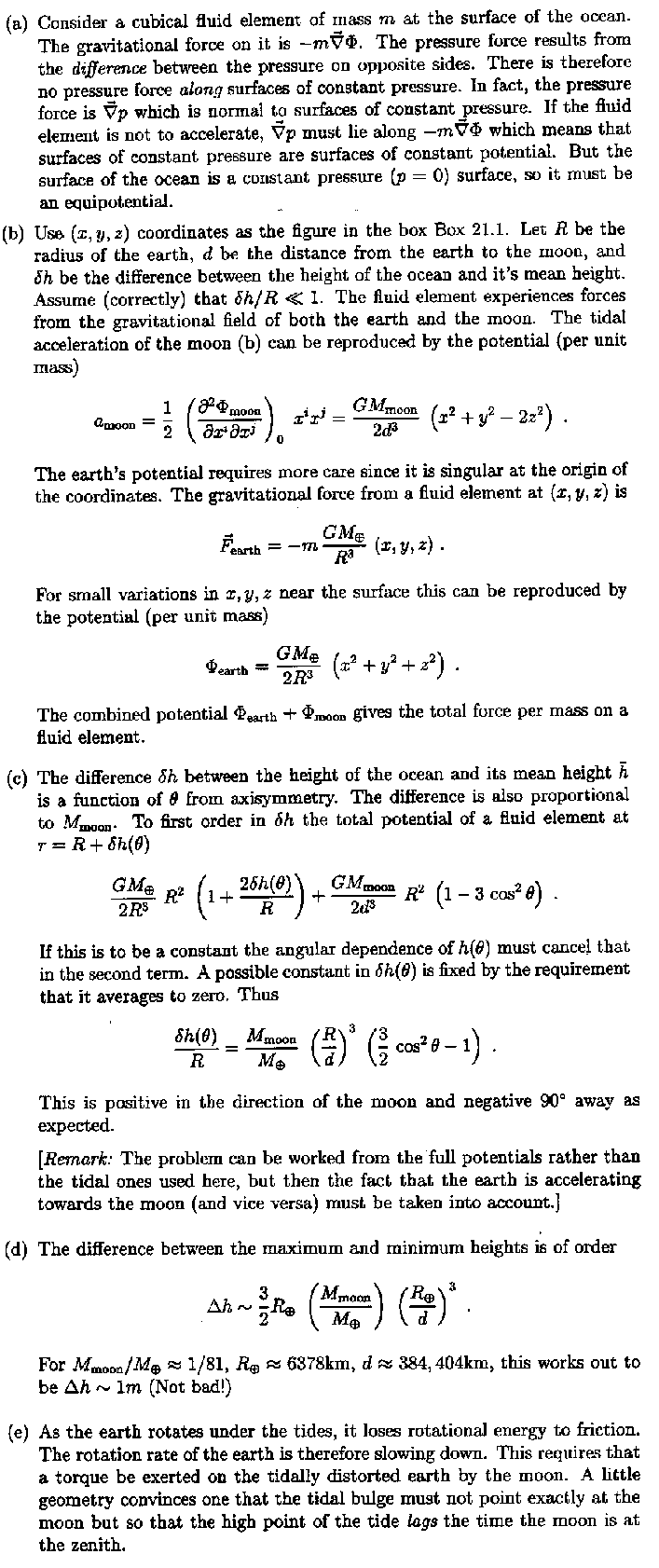
20-18 The covariant components are
|
20-20
a) In rectangular coordinates the Christoffel symbols vanish, so Killing's equation becomes
xa,b + xb,a = 0. The first two have constant components, whose derivatives vanish, for the third, for example, the (1, 2) component is (-y),y + x,x = -1 + 1 = 0.
b) If you verify this by starting with ¶/¶f, you will be doing problem 8-8 over again; else, similarly but "the other way round", express ¶/¶x in terms of ¶/¶r and ¶/¶f.
c) Let the symmetry origin be at (X, Y), so coordinates centered there are x¢ = x - X, y¢ = y - Y. The desired K. V. is
|
21-2

21-11 Hartle's official answer is: "Running the Mathematica program Curvature and the Einstein Equations for the metric given in Problem 8.12 gives R = -2."